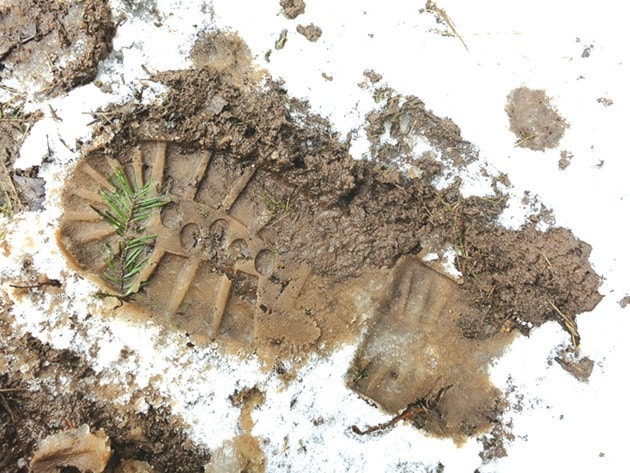My great grandmother, I understand, wore a size 9 sneaker. She covered a lot of ground with those number 9 sneakers. Her influence was felt far and wide, not only by family and neighbors but also acquaintances in distant places. She made quite an impact!
Several years ago I invested in a lightweight tent. It was mosquito proof! Along with this acquisition came a new word for my vocabulary or, at least, a familiar word with a different meaning. That word was “footprint”. After a short investigation I learned that footprint, in this case, meant the area of ground that my tent covered or, for that manner, any tent.
In my mind the meaning of footprint has broadened to mean, namely, degree of negative environmental impact. Perhaps the use of footprint in this way started with the realization that the high use of waffle-soled hiking boots did a lot of damage to the ground cover in recreational areas, especially in the high country where regrowth, in short summer areas, takes dozens of years. To help remedy this, some backcountry campsites and trails had been moved or closed to allow rejuvenation.
The environmental impact or footprint is considered when natural areas, rivers and watersheds, and air quality are involved.
Feet get us places, sometimes in places where they have a significantly negative affect – “Heh, you’re stepping on the onions I just planted”. Big boots, if they are symbolic, are symbolic of negative impact. The environmental impact or footprint is considered (or should be considered) when natural areas, rivers, watersheds, air quality and other natural resources are involved. So, what is your footprint?
We all need water. We can’t survive without it! The average North American uses two U.S. gallons of water per minute to brush their teeth, with the tap running. Brushing with the tap off takes about 0.25 U.S. gallons. Have you ever tried brushing your teeth with eight ounces of water? You might do that on a campout or in a fifth-wheel where the supply is limited. (An overnight pack-in reveals a lot about what one really needs). Then there are water usages like watering the grass and washing the car. It can take three pails of water or 140 gallons to wash a car. And, the list of other water uses and abuses goes on.
People across the pond use a lot less water than we North Americans who “can’t survive” without one or even two showers a day. (Too much showering washes away natural body oils). Water supplies also require energy in pumping and treatment. So our water “footprint” is bigger than what it appears to be – all that is just considering our water resource.
We scurry around in our cars and honking big 4x4s just to pick up an item or two at the grocery store or parade up and down Main Street. In our “capsules” we make unnecessary trips, adding to the already huge footprint of the oil industry. How about parking and walking?
What is the footprint that is growing every day when children are set in front of the screen to watch or participate in video games and programs that decrease the regard for human life, freedom, liberty, creativity, self-management and discernment.
Then there is the footprint, or negative impact, in regards to one’s internal environment – one’s body. We drive a few blocks to pick up a bag of groceries when it isn’t life threatening to walk. Or we drive because we think it’s not socially acceptable to accomplish something or do an errand when out for a walk. Or, is it not exercise unless we spend money?
Water, air, natural areas, rivers and watersheds, space and one’s internal environment - so, what is my footprint, our footprint, your footprint? You and I are the rest of the story!
Ed McMackin is a biologist by profession but a naturalist and hiker by nature. He can be reached at 250-866-5747.
